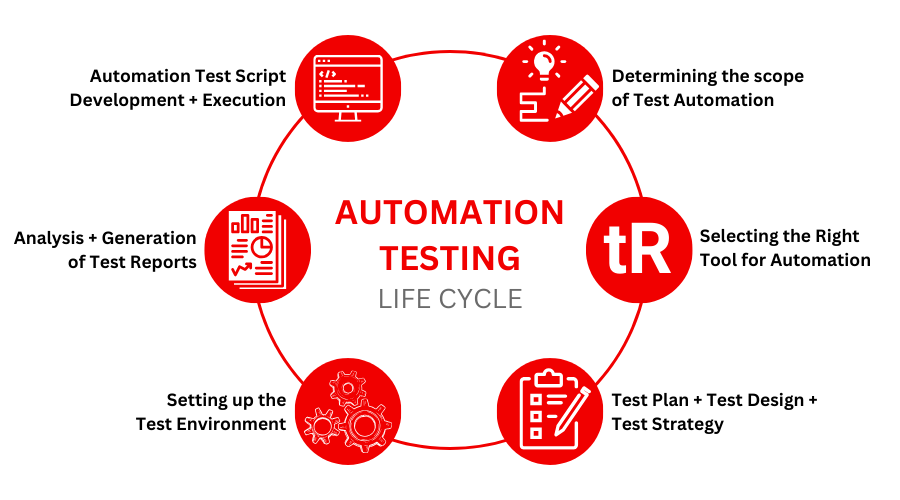Mastering Automation Testing: Tools, Strategies, and Benefits
Mastering Automation Testing: Tools, Strategies, and Benefits
Blog Article
From Guidebook to Automated Testing: A Comprehensive Overview to Transitioning Efficiently and Properly
In the realm of software application screening, the change from handbook to automated procedures has ended up being an increasingly vital shift for companies looking for to enhance efficiency and accuracy in their screening techniques. The trip from manual to automated screening is not without its obstacles, yet when come close to purposefully and with a clear plan in mind, the benefits can be significant.
Advantages of Automated Checking
Automated testing offers various advantages, boosting performance and precision in software application growth procedures. One key benefit is the substantial reduction in screening time. Automated examinations can be run simultaneously on multiple tools and operating systems, substantially speeding up the testing phase contrasted to hands-on testing. This boosted performance enables faster responses on the quality of the software application, enabling designers to identify and resolve concerns without delay.
Furthermore, automated testing makes sure a higher level of accuracy in detecting defects. Consistency in screening is likewise enhanced, as automated examinations carry out the same steps specifically each time they are run.
Choosing the Right Devices

To start with, analyze your requirements and purposes. Recognize the scope of your job, the modern technologies included, and the ability collection of your group. This analysis will assist you determine the features and capacities you need in your testing devices.
Secondly, take into consideration the compatibility of the tools with your existing systems and procedures. Seamless integration with your present software program advancement lifecycle is vital to ensure a smooth change to automation.
Furthermore, assess the scalability and flexibility of the tools. As your screening requires progress, the tools must have the ability to adapt and suit modifications efficiently.
Finally, consider the assistance and area around the tools. Robust assistance and an energetic individual community can offer valuable sources and aid when applying automated screening. By very carefully taking into consideration these facets, you can pick the right devices that straighten with your demands and established the stage for an effective change to automated screening.
Writing Efficient Examination Scripts

When crafting test scripts, it is important to take into consideration the details needs of the software program being tested and guarantee that the manuscripts address all critical functionalities. Descriptive and clear calling conventions for test scripts and examination instances can boost readability and maintainability. Furthermore, incorporating mistake handling devices within the test manuscripts can assist in identifying and dealing with concerns immediately.
In addition, arranging test manuscripts right into modular components can improve reusability and scalability, lowering redundancy and boosting efficiency in examination script maintenance. Regular reviews and updates to test scripts are critical to equal advancing software program needs and capabilities. By complying with these principles, testers can produce reliable and robust examination manuscripts that add substantially to the success of automated testing procedures.
Integrating Automation Into Workflows
By flawlessly incorporating automated testing tools like Selenium or Appium right into the software program advancement lifecycle, groups can achieve faster comments on code adjustments, leading to quicker pest detection and resolution. This assimilation enables for continual testing throughout the advancement process, guaranteeing that any type of concerns are identified early on, resulting in greater software quality. Appropriate integration of automation tools needs partnership between development, testing, and operations teams to develop a unified workflow that enhances efficiency and performance in supplying top notch software program items.
Making Sure a Smooth Transition
Successfully transitioning to automated screening involves careful planning and careful implementation to take full advantage of and decrease interruptions performance in the software development process - automation testing. To ensure a smooth transition, it is necessary to start by conducting a comprehensive analysis of the present screening processes and determining areas where automation can bring the most considerable advantages. Involving check with all stakeholders at an early stage at the same time, consisting of programmers, testers, and job managers, is important for amassing assistance and buy-in for the automation campaign
Interaction is vital throughout this transition stage. Clear communication of the objectives, advantages, and expectations of automated testing helps to manage any resistance or worries that might arise. Additionally, providing appropriate training and resources for group members to upskill in automation tools and techniques is essential for guaranteeing an effective shift.

Verdict
Finally, transitioning from guidebook to automated testing provides many benefits, including raised efficiency and dependability. By selecting the proper devices, writing effective test manuscripts, and integrating automation flawlessly into operations, organizations can ensure a successful and smooth shift. It is necessary to embrace automation as a valuable possession in find software testing processes to improve overall quality and productivity.
In the world of software application screening, the change from guidebook to automated processes has come to be a progressively vital transition for organizations looking for to boost effectiveness and precision in their testing techniques. Automated examinations can be run at the same time on several devices and running systems, considerably speeding up the testing stage compared to manual testing. Consistency in testing get more is likewise boosted, as automated tests execute the same steps precisely each time they are run.To ensure the effective application of selected screening tools, the creation of effective examination manuscripts plays a critical duty in verifying the capability and efficiency of automated processes - automation testing. By adhering to these concepts, testers can develop durable and effective examination manuscripts that contribute significantly to the success of automated testing processes
Report this page